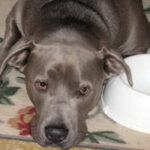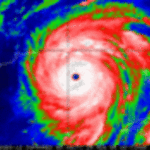With more than a thousand victims from the most recent typhoid outbreak in Laguna last March 2008, the health alert on this life threatening disease is up once again. Parents are set on heightening the barriers against typhoid and ensuring their kids’ safety. The world Health Organization identifies typhoid as a serious public health problem, with an estimated 16 to 3 million cases annually, resulting in 500,000 to 600,000 deaths in endemic areas.
What is it?
Typhoid fever is an illness caused by the Salmonella typhi bacteria. It is more prevalent in developing countries like the Philippines because of poor sanitation, with its incidence highest in children between 5 and 19 years old.
How is it acquired?
Salmonella typhi lives only in humans, with the bacteria travelling through the bloodstream into the intestinal tract. Transmitted primarily through the oral-fecal route, one can get infected by consuming food and beverages handled and contaminated by a person with Salmonella typhi, or if the drinking water or water used in washing food is contaminated. Contaminated shellfish, raw fruits and vegetables, non-pasteurized milk and dairy products are also possible sources. Once the bacteria enters the person’s body, they multiply and spread to the whole body.
What are its symptoms?
It takes about one to two weeks after contamination before symptoms show. Symptoms include sustained high fever (39 degrees C to 40 degrees C), severe headache, overall fatigue or weakness, loss of appetite, diarrhea or constipation and abdominal discomfort. The only way to confirm of one has typhoid is through stool examinations and blood culture tests.
How is it treated?
Antibiotics are given to fight the infection and rid the body of the bacteria. The patient usually feels better after two to three days. Symptoms are also treated with fluid replacement for diarrhea and fever reducing medicines. Adequate rest is important. Some persons become carriers of Salmonella typhi even after treatment; to follow up checkups are needed to ensure that the body is completely bacteria-free.
Prevention
Vaccination is the first prevention step towards fighting typhoid but does not guarantee complete protection. Vaccinated kids may develop less severe but prolonged symptoms, which still merits medical attention. More importantly, raise the “neat alert” at home:
1. Practice good personal hygiene. Wash hands properly with liquid soap and water before eating or handling food, after going to the toilet and after changing your baby’s diapers. Clip fingernails regularly to avoid build up of bacteria.
2. Handle and prepare food properly: Bring drinking water to a rolling boil for 15 to 20 minutes. Cook food thoroughly; keep cooked and uncooked food tightly covered to keep flies from hovering and infesting it. Wash all vegetables and fruits thoroughly, especially those that are to be eaten raw. Scrub and rinse shellfish in clean water. Keep two sets of utensils for food preparation: one for cooked food, another for raw food. Consume cooked food as soon as possible. If necessary, refrigerate cooked leftovers and reheat thoroughly before consumption. Discard any spoilt food items properly. Store perishable food in the refrigerator. Keep it tightly covered and labeled with the date it was cooked. Buy bottled water when dining out. Ask for drinks without ice unless the ice is made from bottled or boiled water. Keep your home surroundings clean to eliminate every possible breeding area for flies and mosquitoes.





